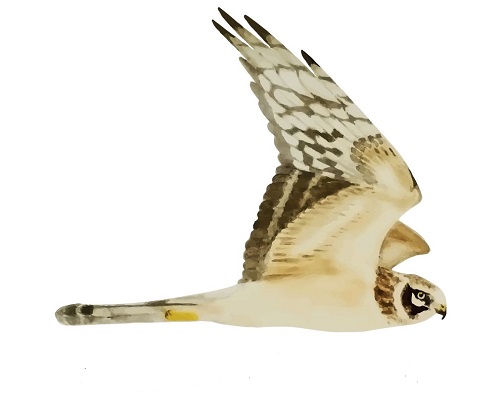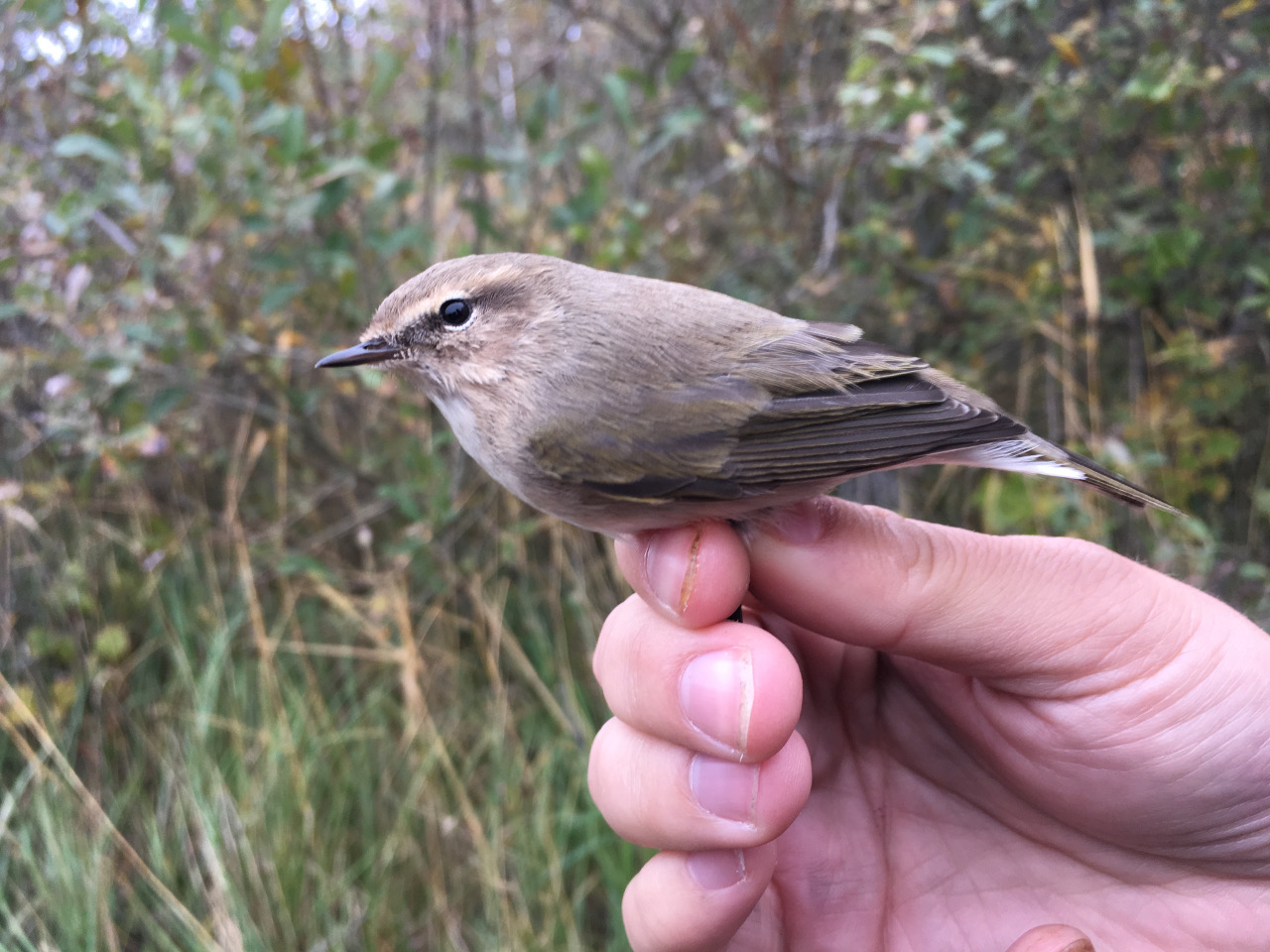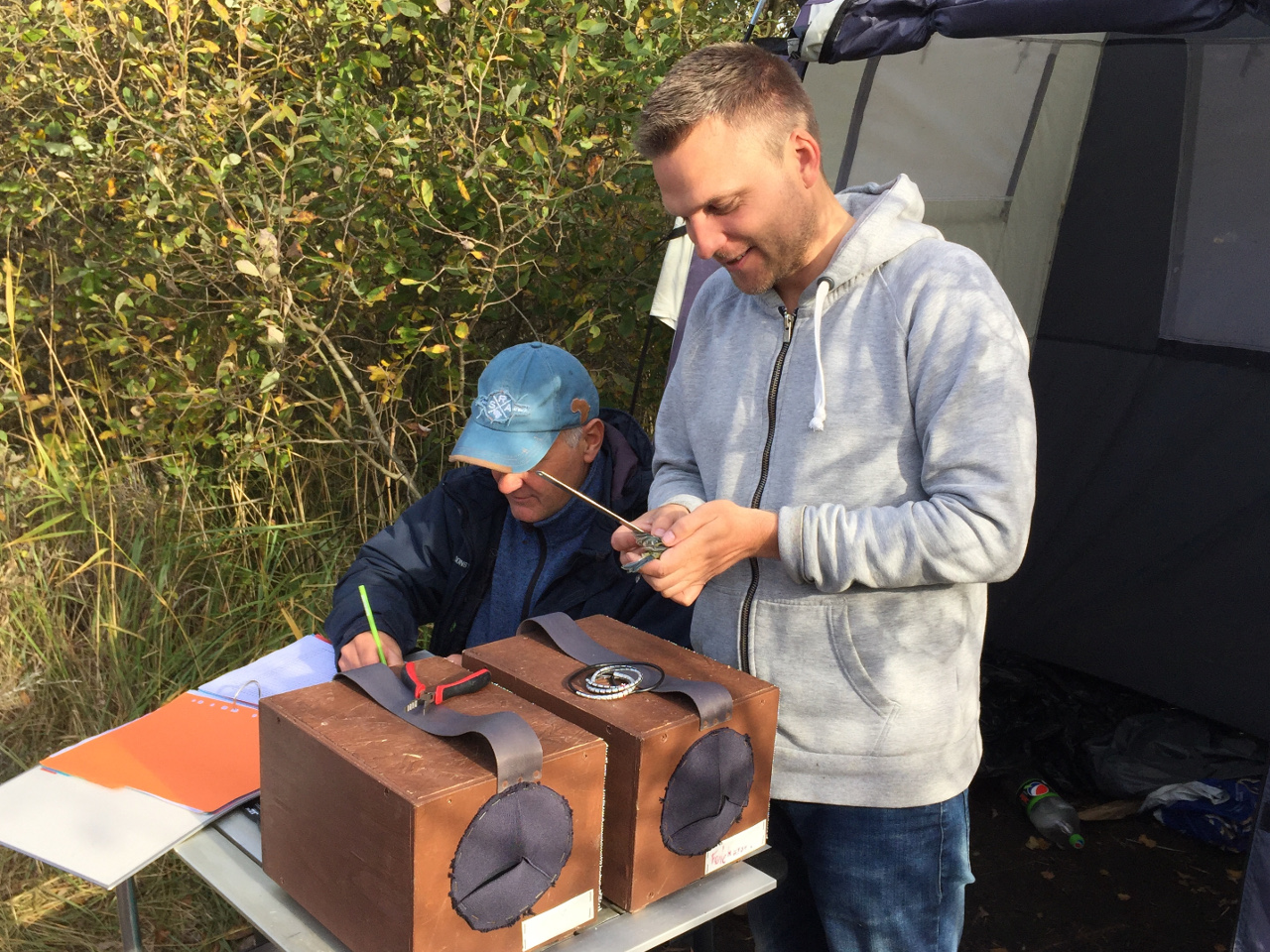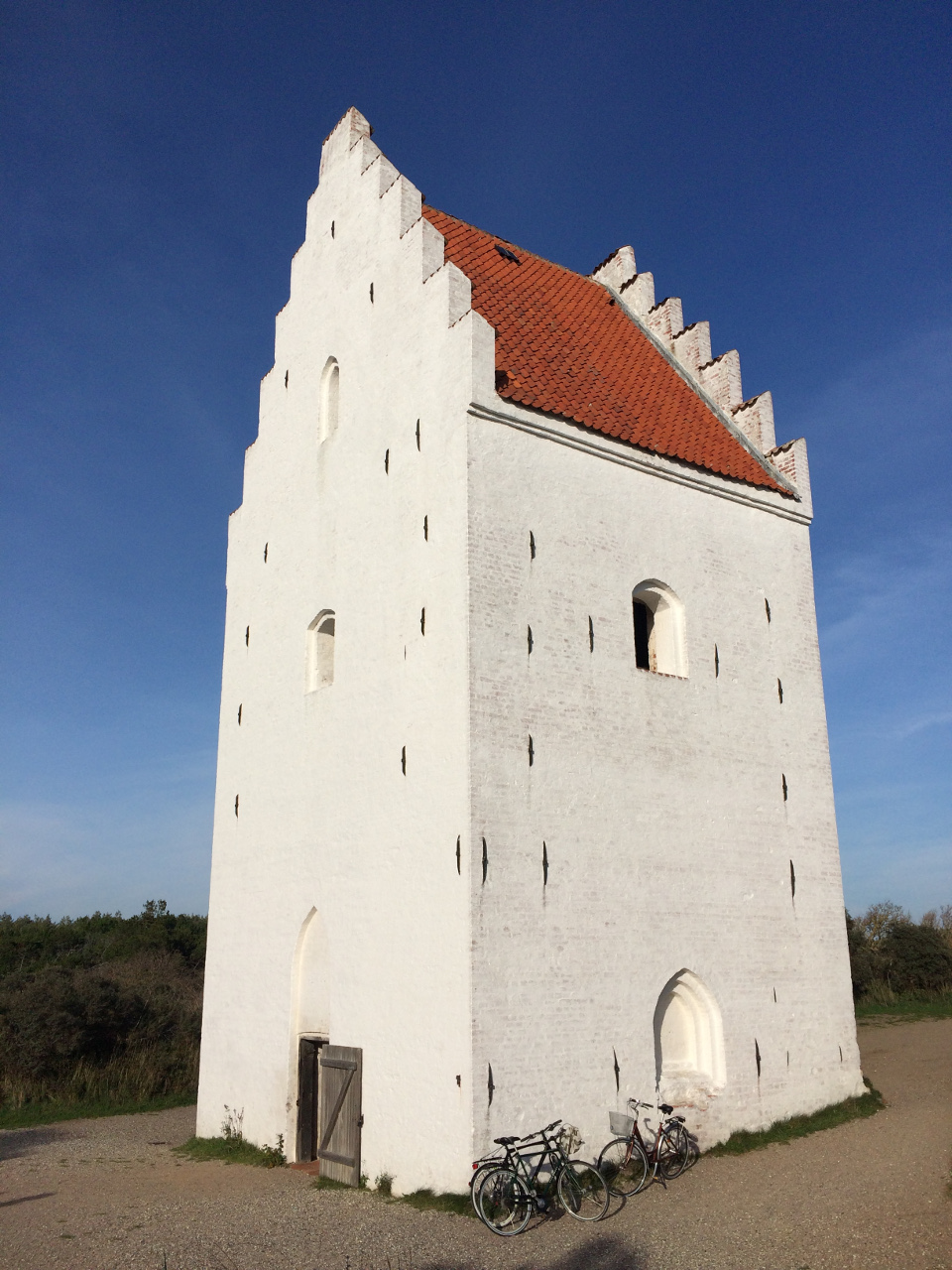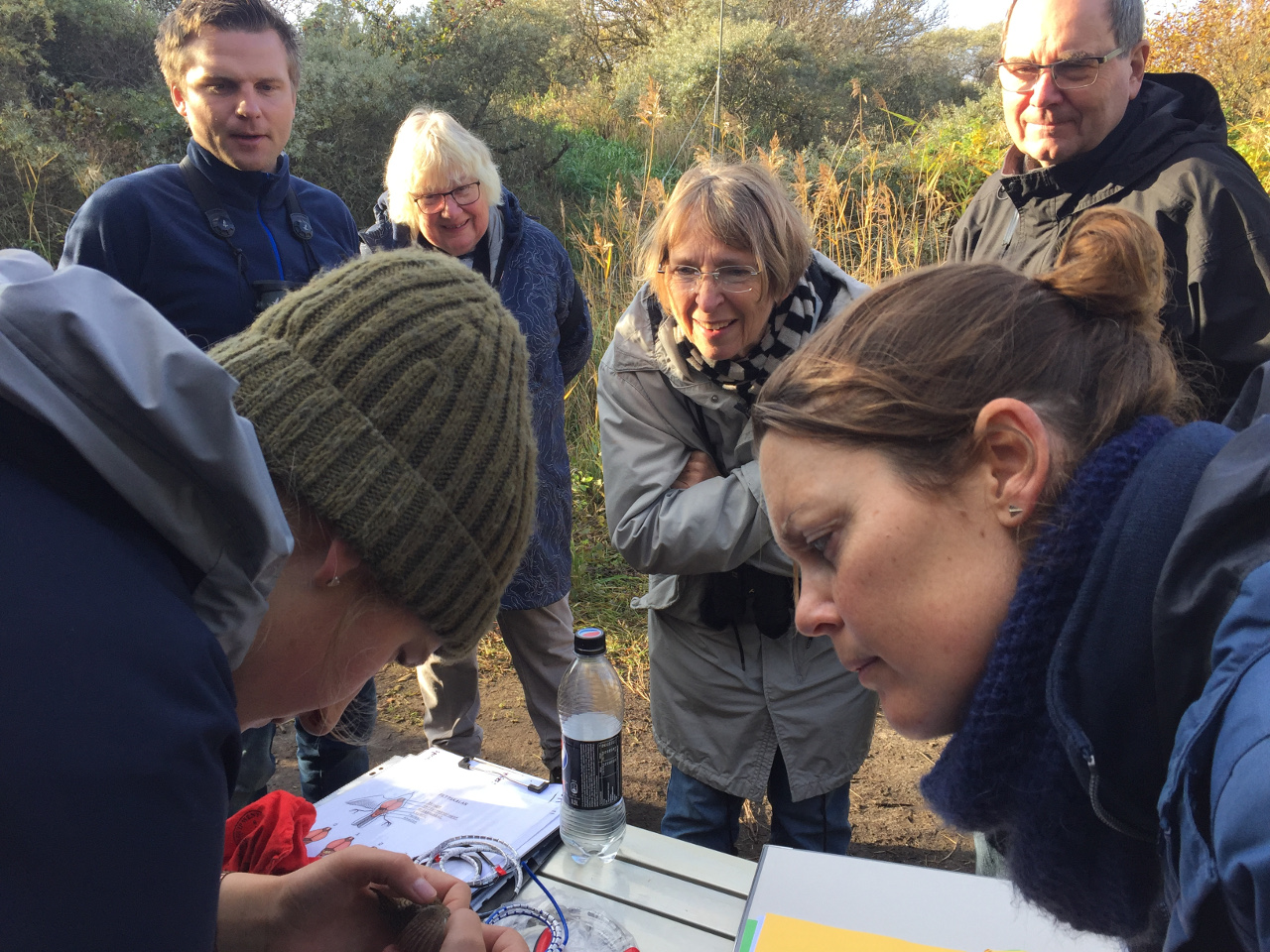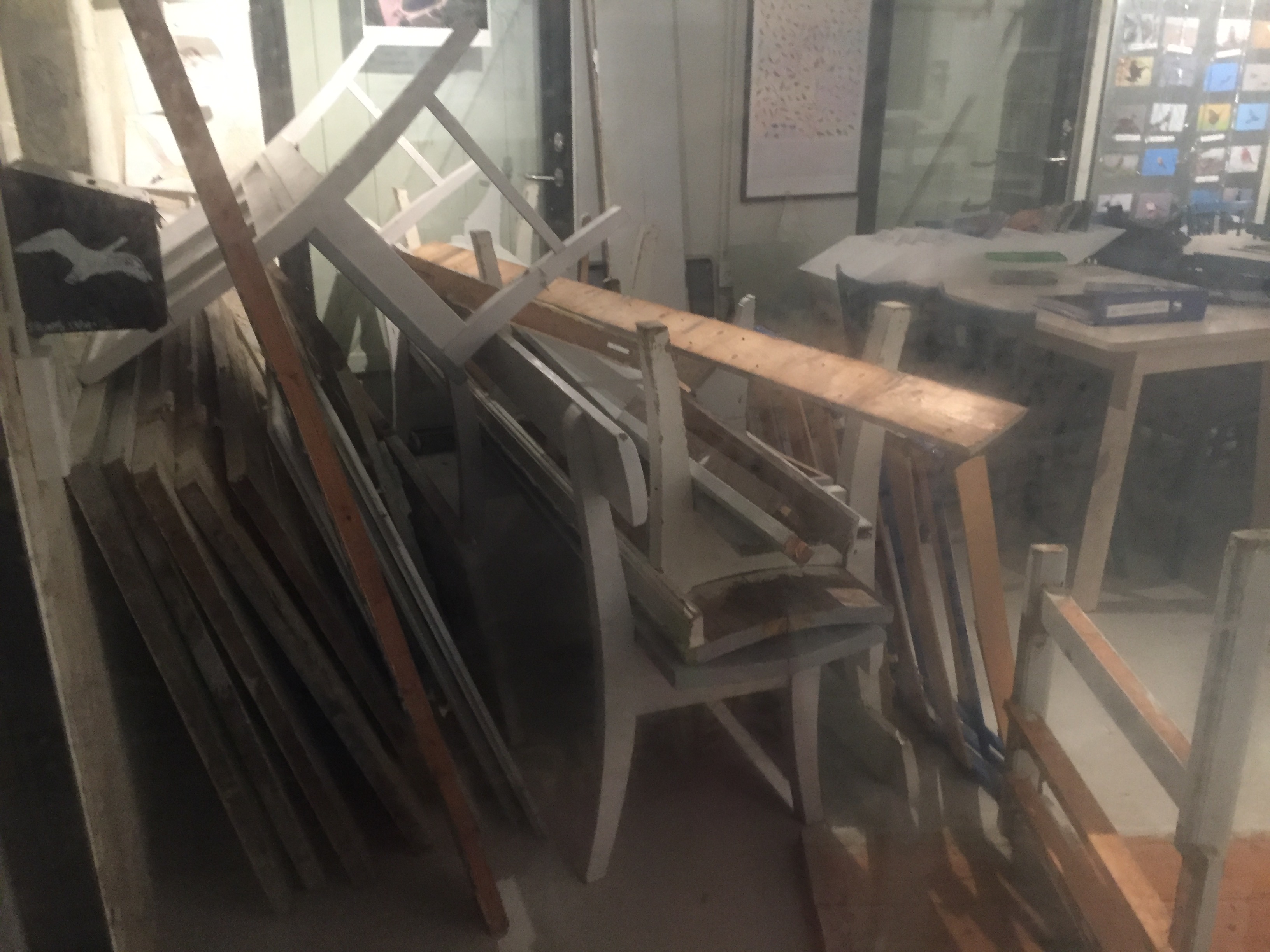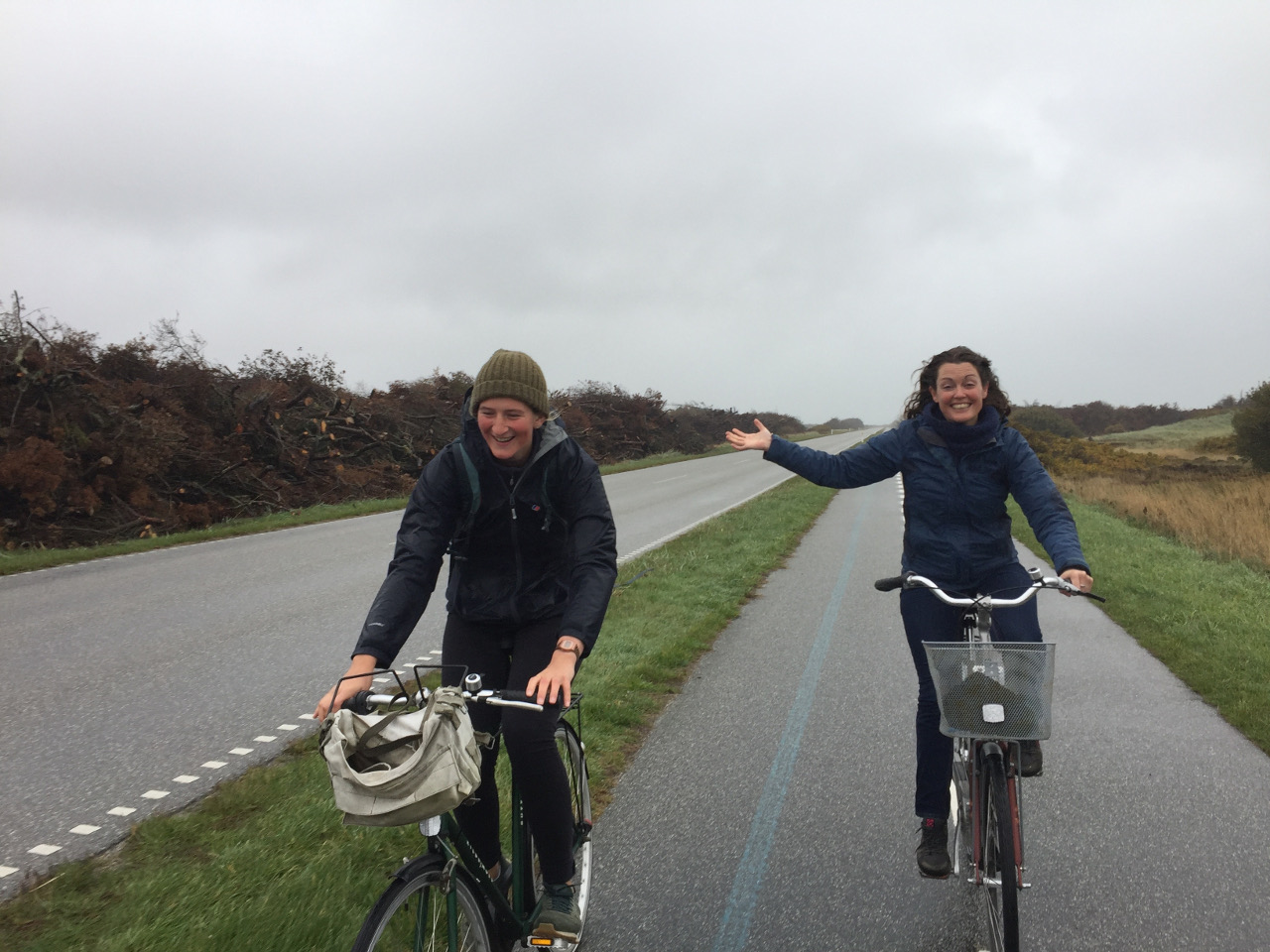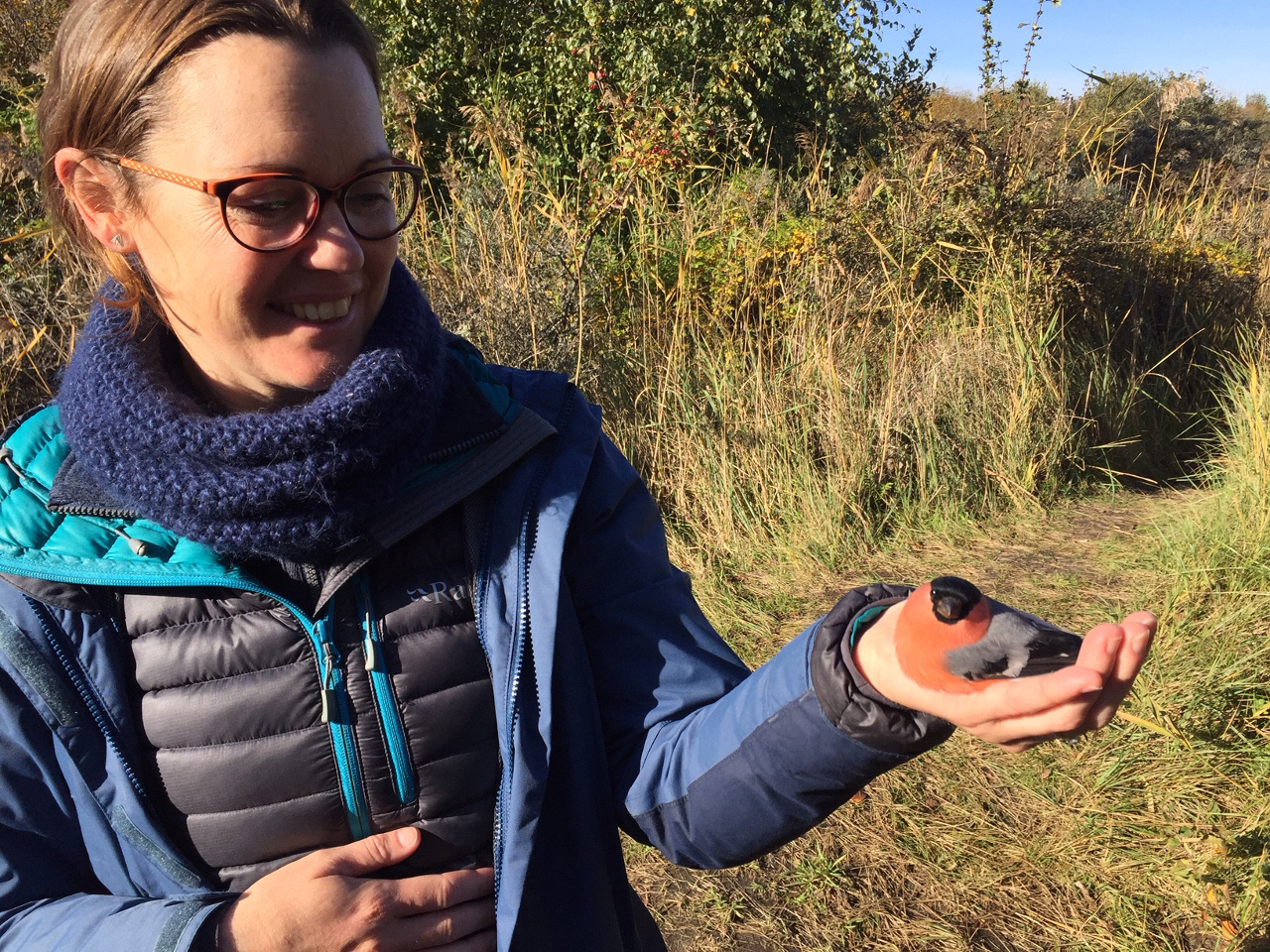Her på Skagen Fuglestations blog bringes korte nyheder i dagbogsformat om hændelser på fuglestationen.
Se indlæg fra måned: jan. (1)mar. (31)apr. (23)maj (22)juni (30)juli (31)aug. (29)sept. (28)okt. (30)nov. (20)dec. (16)
Birds birds birds
Today began with Sarah and I opening the nets at 0715, as we were opening the nets we caught 3 birds- the first sign. In the first round we had about 20 birds so we casually sent James a message asking him to join us to help extracting (he was out observing). Then Erik, Jørgen and Igor arrived saying there were Goldcrests (Fuglekonge) everywhere in the dunes and that there was a poisonous atmosphere! From then onwards we had large numbers of Goldcrests and Robins (Rødhals) every round. Simon joined us briefly at about 0900 but then had to leave for a guided tour in the lighthouse garden- he had 25 people!!!! A Surf Scotor (Brilleand) was sighted out at Grenen but there were too many birds for any of us to see it before it got too far out to see. Then at 11 Jorgen also left us, but Knud, Inge and his friend Thom and his wife joined us and led the extracting team along with Erik and James, while I rang and Sarah scribed! We also caught the Northern sub-species of Long tailed tit (Nordilig Halemjse) which was a real treat!!!
Simon then joined quickly and helped us process all the birds! By 1300 things had slowed and slowly everyone left leaving James, Sarah and I and although there weren’t such large numbers of birds it was still enough to keep us busy I couldn’t have done it without them! We eventually shut the nets and called it a day and arrived very hungry back at the lighthouse at 1630!!!! What a long day ringing!!! By this point Simon had left to go to Aalborg.
We then had a leftovers feast and entered all the data!!! It took ages!!! As we sat down to eat we heard Simon arrive and was greeted by an amazing surprise of Lisa arriving for a couple days stay before she begins uni again!!! Sadly, no Daniel with her- we miss you Daniel!!! But it was such a lovely surprise!! We should have known we couldn’t have opening the freezer day tomorrow without Lisa- our chief surgeon and dissector!
Birds Rung (206): 1 Song Thrush (Sangdrossel), 1 Blackbird (Solsort),1 Greenfinch (Grønirisk), 2 Great tits (Musvit), 48 Robins (Rødhals), 15 Wrens (Gærdesmutte), 14 Bearded tits (Skægmejse), 10 Blue tits (Blåmejse), 7 Blackcaps (Munk), 1 Bullfinch (Dompap), 9 Chiffchaffs (Gransanger), 75 Goldcrests (Fuglekonge), 21 Northern Long Tailed Tits (Halemejse Nordilig) and 1 Chaffinch (Bogfinke)
People: Molly Brown, Sarah Bedford, James Butcher, Erik Christopherson, Jørgen Kabel, Igor, Knud and Inge Pederson and their friends Thom and his wife. Lisa Vergin and Simon S. Christiansen.
Night Tour
the ringing today was another exciting discovery - a Siberian Chiffchaff (Sibinsk Gransanger) noticeably different to its common cousin thanks to a duller appearance - devoid of any yellow or green - and with whitish under parts rather than the typical cream colour. This bird was one of 26 new birds ringed at Grenen.
James and I went out observing - first with Rolf at World’s End where we saw another Richard’s Pipet (Stor Piber) - it gave us good views as it flew overhead. We then joined Knud and his friend Thom on the beach. A good look at a large group of gulls roosting on the beach revealed Caspian Gulls of various ages, some Great Black Backed (Svartbag) and Herring (Sølvmåge) gulls with colour rings which Knud and James did an excellent job of reading from a great distance (and we look forward to knowing whereabouts they are from once the rings are checked) and a 2nd winter Glaucous Gull (Gråmåge).
After lunch, we processed the day’s data and did various jobs down in Birder’s Club, whilst welcoming visitors at the beginning of the Danish October holidays (Week/Uge 42). There’s a full programme of events this week (more details here), starting with a night tour this evening. The lighthouse garden nets were opened to see if we could catch any owls and Molly stayed to check them hourly.
Nine people attended the tour and Simon, James and I went out onto the beach with flashlights, searching for birds and animals that are on the move at night. Our investigations showed that there’s lots going under the cover of darkness at Grenen! We saw deer, seals, a hare, and lots of ducks and waders roosting on the freshwater pool near the tip that unfortunately were too distant to catch. Back at the lighthouse, Molly hadn’t had any luck with owls in the nets, but a sole Robin (Rødhals) was waiting for us on the path and we managed to catch it and ring it which was great for the group to see before they left. A video is here of everyone meeting the little visitor!
Birds caught - 26: 1 Siberian Chiffchaff (Sibinsk Gransanger), 2 Blue Tit (Blåmejse), 1 Great Tit (Musvit), 1Chiffchaff (Gransanger), 1 Song Thrush (Sangdrossel), 4 Robin (Rødhals), 3 Wren (Gærdesmutte), 2 Chaffinch (Bogfinke), 3 Blackcap (Munk), 3 Bullfinch (Dompap) and 5 Goldcrest (Fuglekonge)
People: Sarah Bedford, Molly Brown, James Butcher, Rolf Christensen, Knud Pedersen and Simon S. Christiansen
A redpoll from Iceland
Most exciting news of the day came from Jennes Sø, where Molly was ringing with Michael and caught a ringed Redpoll (Gråsisken) species. When she examined the ring, she found the bird had been ringed in Iceland and so probably belongs to the sub species islandica. Extensive measurements, photos and DNA samples were taken which will confirm the bird’s identity in due course, but if it proves to be the case this will be a great first record for Denmark! Over the morning 27 birds were ringed in total.
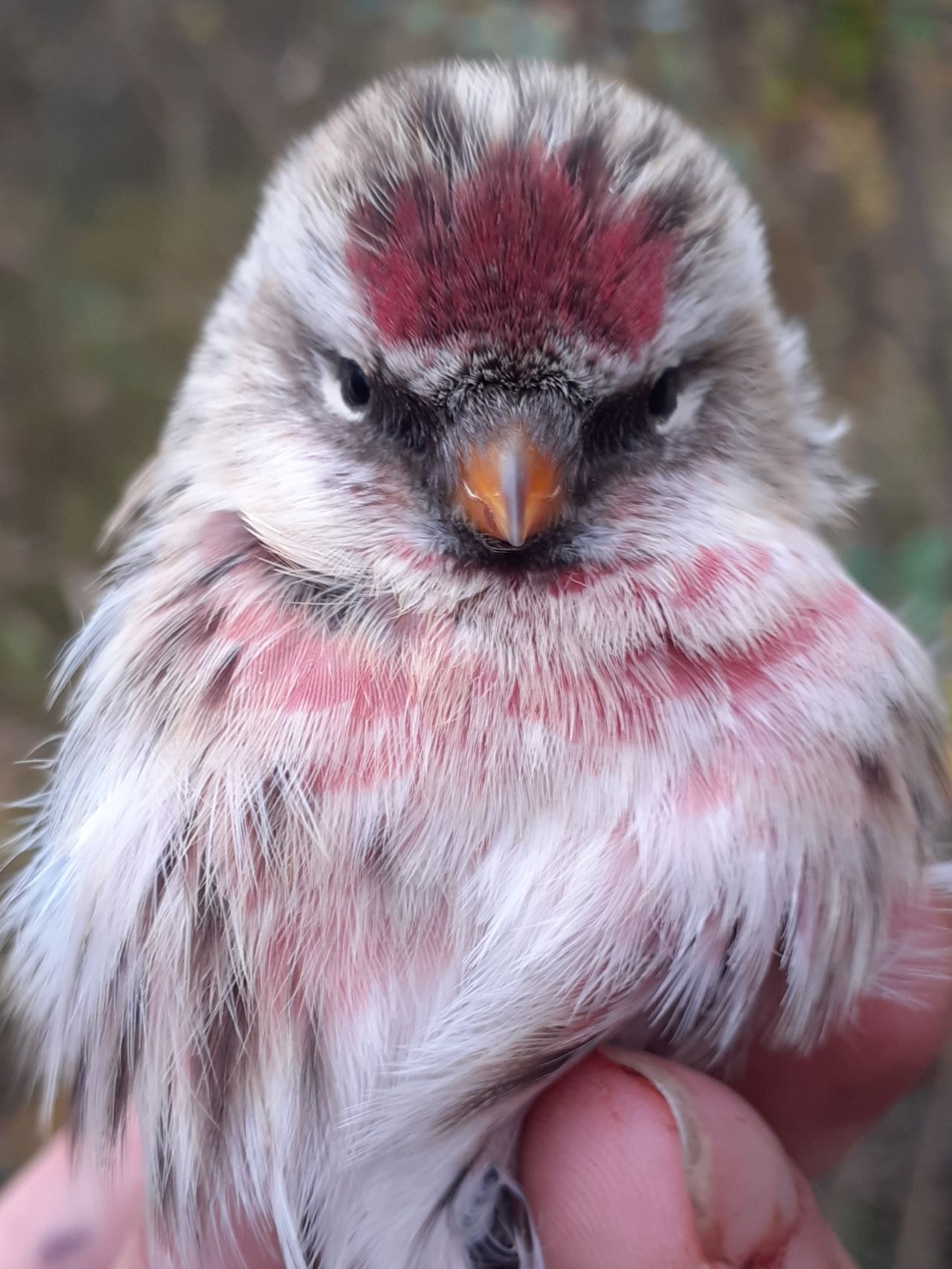
Redpoll with an Icelandic ring caught by Molly and Michael
Sarah and I took a long walk out to Nordstrand and back, recording migrants on the way. Highlights were 34 Parrot Crossbills (Stor Korsnæb) flying over, a male Ring Ouzel (Ringdrossel) amongst the other thrushes, 51 Bearded Tits (Skægmejse) and 4 Rough-legged Buzzards (Fjeldvåge) giving great close views.
It seems this year is a true invasion year for Parrot Crossbills (Stor Korsnæb), with locals commenting that these are the biggest numbers they have seen for many years. Having seen many fly over our heads, we were keen to get some closer views, and so this afternoon we cycled back to Den tilsandede kirke south of Skagen. After meeting with the local group Guldmajssøens Venner, Simon also came and joined us. The pine woods around here are an obvious destination for these birds, and we were treated to great views of a flock of 28 Parrot Crossbills coming down to drink at puddles in the car park. Amongst them were 4 Common Crossbills, giving us a good chance to compare the different structure and bill size of these species at close range, as well as study the all-important calls!
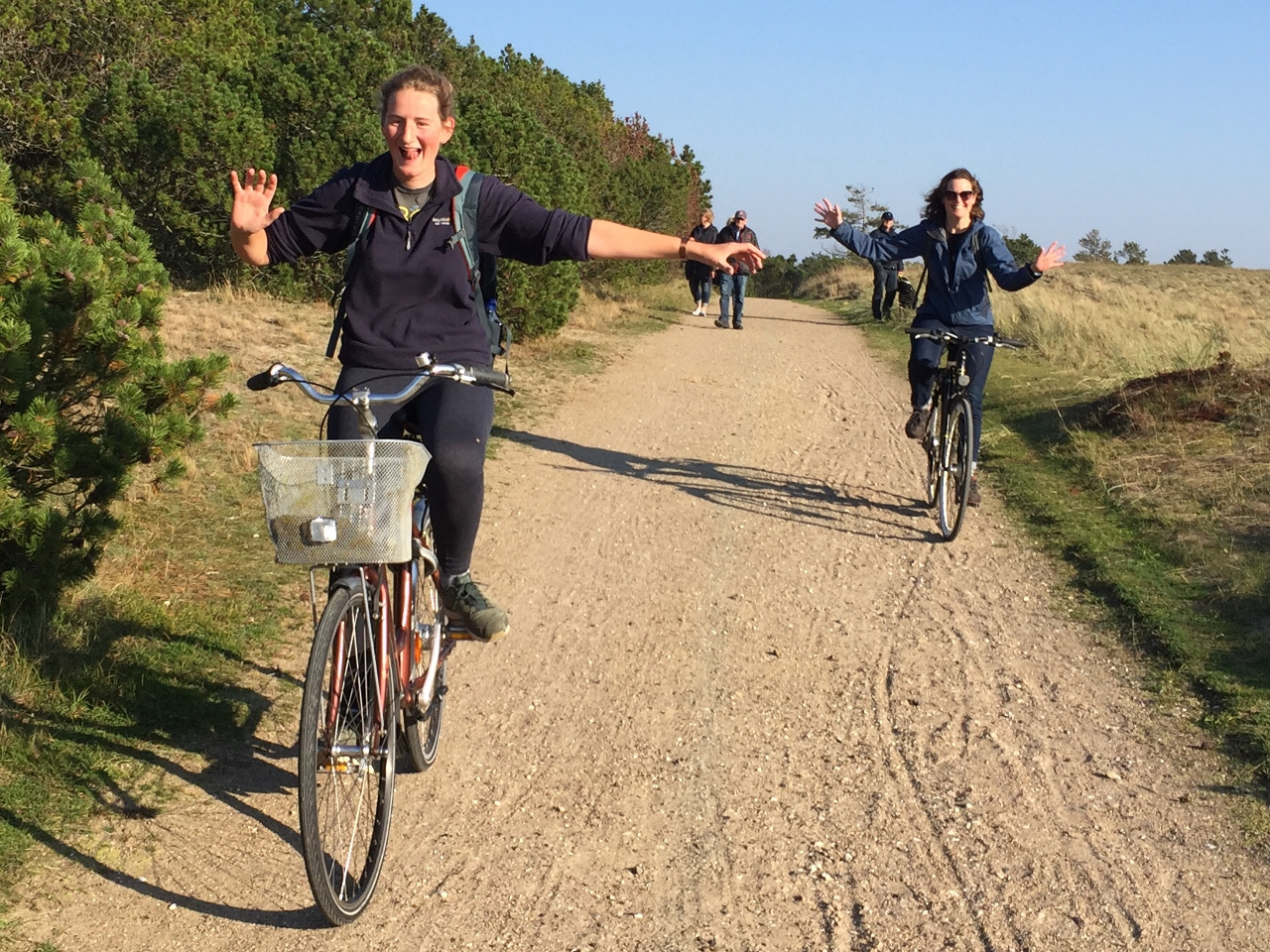
Look mum no hands! (en route to Parrot Crossbills)
In the evening Simon cooked up an Italian feast of chicken wrapped in bacon with pasta, and we made plans for a busy week of guided tours ahead for Uge 42, which is a holiday week in Denmark.
You can find more details of all this week’s activities here.
People: Molly Brown, Micahel Ancher, Sarah Bedford, James Butcher and Simon S. Christiansen.
BLUE TIT DAY!
Dorthe and I started the day by opening the nets at Grenen and we were soon joined by Jørgen, Igor and Simon in time for the second round. Sarah and James joined Rolf at World's End again.
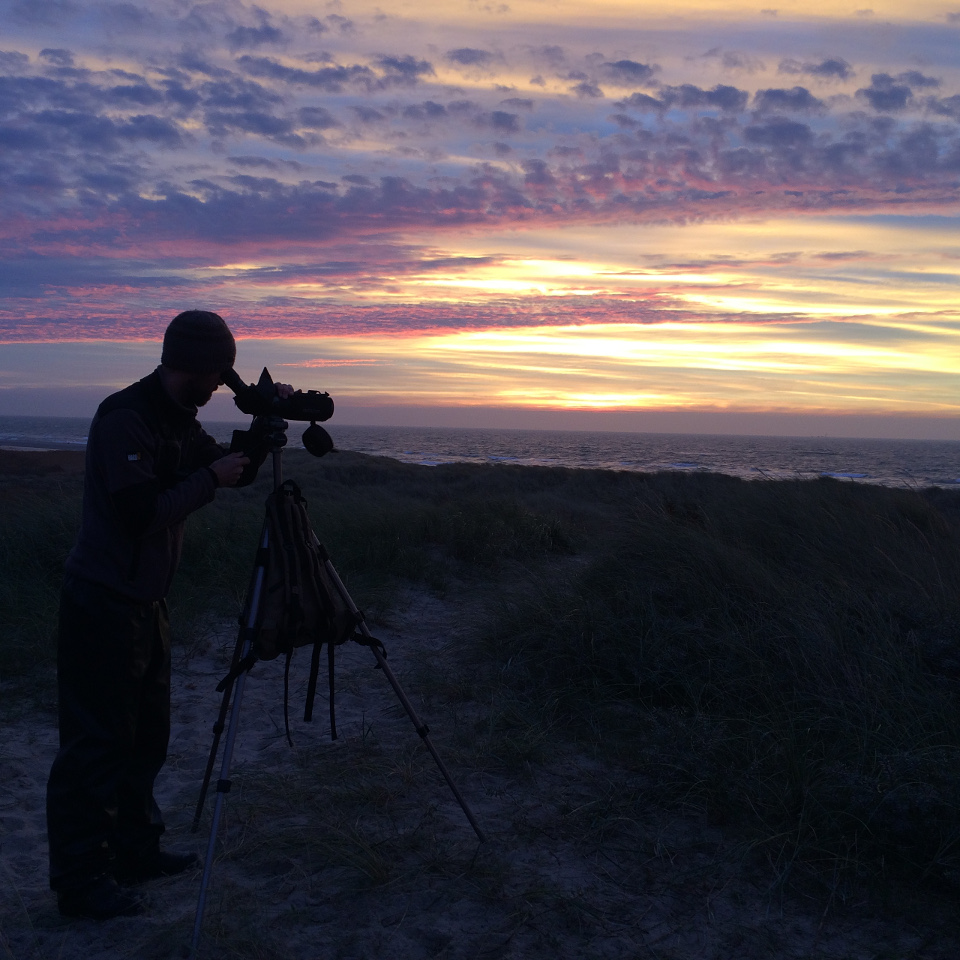
After a disappointing first round, on the second round each net we came to in the reed beds had about 20 Blue Tits in! So Simon took birds to ring and everyone else remained extracting, we then called Sarah and James and roped in Erik who was an absolute godsend and really helped us out, even without his glasses! Every time we emptied the nets they just filled again! So, we resorted to shutting the nets immediately after we’d cleared them. We eventually re-opened the nets at 11:40 and we caught about 20 more birds, but nothing on the scale that we had before. We also had a guided tour amongst the chaos, which Dorthe led. Michael Anchor also had a busy morning ringing with 50 birds.
All the Blue Tits made for a very happy Simon!!!
In the afternoon James, Sarah and I rode into town and continued until we reached Den Tilsandede Kirke- the sand covered church, I never realised how nice it is on the other side of Skagen- so much pine woodland with Nutcracker and Crossbill potential! I can see why all the birders go to the tip, once the birds spread out into the woodlands finding rarities must be a lot harder!!! We then cycled back and after finding an Ice cream shop shut till 2019, we came back to the station and bought ice cream from Christel and Fleming.
During this time Dorthe left us to go to Blåvand, let’s hope she doesn’t punish us with too many good birds!
We also went night catching led by James and although we didn’t catch anything we were very close to a Short-Eared Owl, which we pursued into the gorse and reeds without success. But we initially got very good views of it flying over us!
Birds caught: 168 total! 109 Blue Tits (Blåmejse), 33 Great Tits (Musvit), 11 Coal Tits (Sortmejse), 1 Great Spotted Woodpecker (Stor Flagspaette), 2 Blackbirds (Solsort), 3 Song thrushes (Sang Drossel), 1 Robin (Rødhals), 1 Wren (Gærdesmutte), 1 Dunnock (Jernspurv), 1 Chaffinch (Bogfinke), 1 Blackcap (Munk), 2 Chiffchaffs (Gransanger) and 2 Goldcrest (Fuglekonge)
People: Molly Brown, Sarah Bedford, James Butcher, Dorthe Schmit, Jørgen Kabel, Erik Christophersen and Simon S. Christiansen
Bloody Friday
Molly’s poor hands needed some love and attention after an eventful morning at the ringing site in Grenen today. Amongst the usual crowd of birds were some notable superstars - first up, an aggressive juvenile Jay (Skovskade) that wasted no time in attacking Molly’s fingers and drew blood almost straight away. One of the methods of ageing a Jay is attempting to determine how blue its eyes are, so that meant we had to get seriously up close and personal.

In the next round, a real surprise - a Great Grey Shrike (Stor Tornskade). This bird is beautiful but brutal and went in for the kill, drawing yet more blood from Molly. We saw firsthand how it earned its affectionate name “the butcher bird”. The hooked bill and sharp talons were all too obvious indicators that this bird is a menace amongst smaller passerines.

It was of course a real treat to see a bird like this up close and especially enjoyable for Jørgen, who was joining in the ringing for the first time. A video of him releasing the shrike can be seen here on Facebook.
Despite her bloody hands, Molly generously took time to provide us all with some useful teaching on moult strategies, using moult cards to help us consider the ages of the birds being caught. She also studied the skull ossification of some of the birds caught - another approach used when trying to age a bird.
It was a busy time at the the nets today, so a perfect opportunity for three visiting university students from Aalborg University (Rikke, Anne Mette and Maria) to see what goes on at the observatory on a daily basis. They were out with us at dawn, observing the opening of the nets and following us through the whole process of extracting, processing and releasing the birds.

While we were at Grenen processing the 48 birds caught there, Michael had a busy day at Jennes Sø, with 69 birds rung, including a Marsh Tit (Sumpmejse) and back at the lighthouse, Simon welcomed Cirio Pertoldi and Dan Bruhn from Aalborg University to discuss future partnership projects with the observatory which was exciting!
Birds caught at Grenen = 48: 1 Great Grey Shrike (Stor Tornskade), 1 Jay (Skovskade), 20 Blue tits (Blåmejse), 3 Redwing (Vindrossel), 3 Great tit (Musvit), 2 Robins (Rødhals), 5 Wrens (Gærdesmutte), 4 Goldcrests (Fuglekonge), 1 Blackcap (Munk), 1 Reed Bunting (Rørspurv), 1 Brambling (Kvækerfinke), 1 Coal Tit (Sortmejse), 1 Blackbird (Solsort) and 4 Chiffchaffs (Gransanger).
People: James Butcher, Sarah Bedford, Molly Brown, Simon S. Christiansen, Jørgen Kabel, Dorthe H. Schmidt and Michael Ancher with Rikke, Anne Mette and Maria from Aalborg University.
Arrivals from the East
The wind swung around to the south-east today, but unfortunately was too strong for ringing so everyone was out observing this morning. There was a steady passage of seabirds moving north-east out of the Kattegat including Kittiwakes (Ride), auks (Alkefugle), Great Skuas (Storkjove), Arctic Skuas (Almindelig Kjove) and a Little Gull (Dværgmåge).
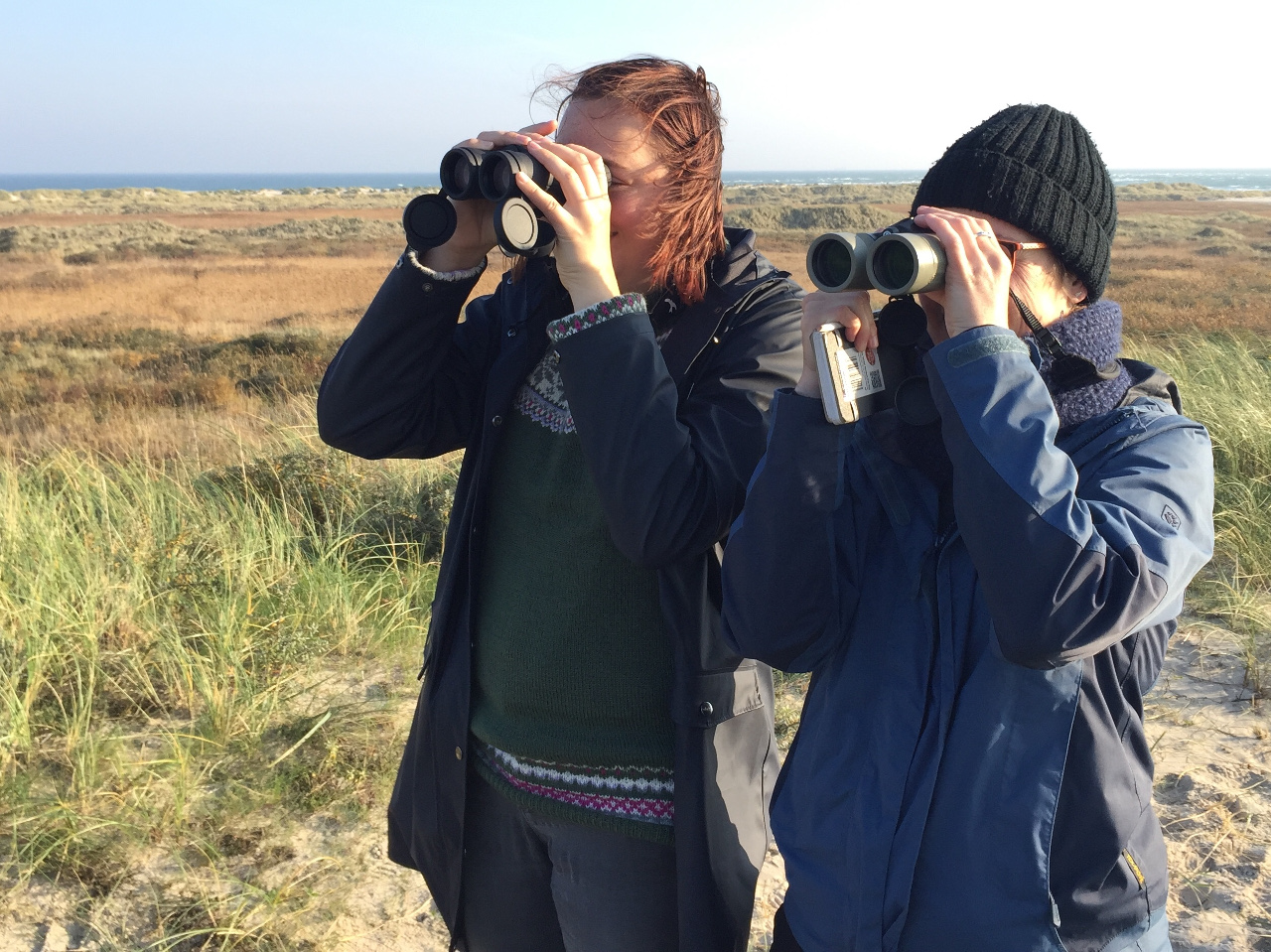
Sarah and Dorthe during early morning observation from World’s End
There was also a notable easterly movement of birds coming in off the sea, including 2 Hen Harriers (Blå Kærhøg), several Sparrowhawks (Spurvehøg) and corvids including Jackdaws (Allike) and Hooded Crows (Gråkrage). Rolf explained these birds were likely to have come across from Sweden on the winds, and it was great to see this migration in action. On the ground, Molly picked out one of yesterday’s Water Pipits (Bjergpiber) but true to form they evaded the camera, diving back into the reeds as soon as they were flushed.
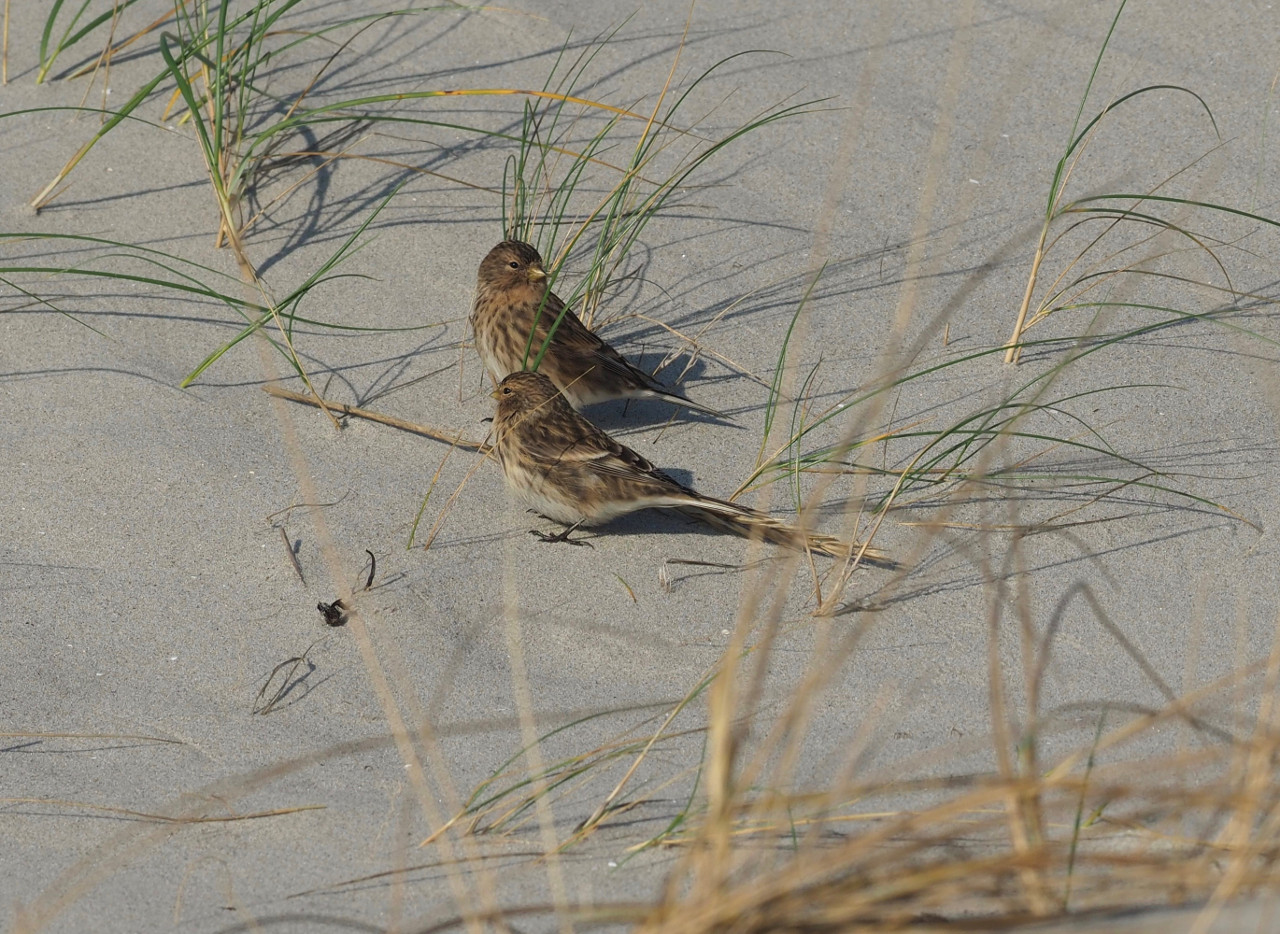
Twite (Bjegirisk) on the beach – far more obliging for the camera than the Water Pipits
Away from Grenen, the string of Nutcracker (Nucifraga) sightings continued further south at Gyvelstien, deepening Simon’s dipping pains. I sense we will be heading off on another Nutcracker hunt very soon to try and crack that very elusive nut!
This afternoon Sarah and I did some alternative high-tech birding investigating the station’s radar system. It turns out identifying birds on a radar screen can be far more challenging that in the field - but we’re making progress! The future aim is to monitor nocturnal migration over Skagen by using the radar combined with sound recording.
This evening we welcomed three students to the station, Rikke, Anna Mette and Maria. They will be ringing with us tomorrow as part of a project to analyse some of the station’s historical ringing data.
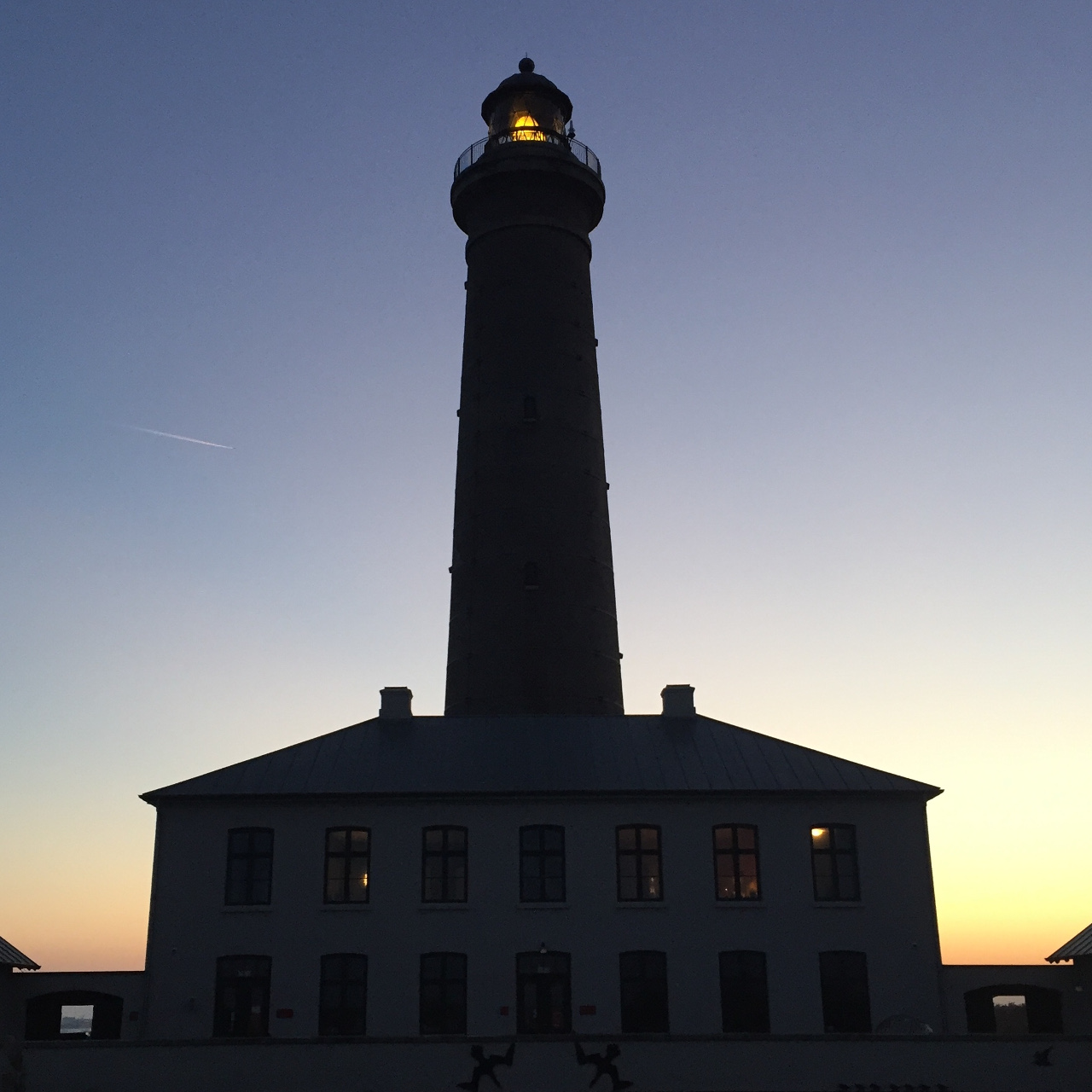
A beautiful sunset this evening
People: Simon S. Christiansen, James Butcher, Sarah Bedford, Molly Brown, Dorthe H. Schmidt and Rolf Christensen.
Dværg dag
Vi startede alle ud med ringmærkning. Molly, James, Sarah og jeg drog ud og åbnede nettene, og Simon stødte til os senere. Der var en god variation. På trods af 22 fangede fugle, var det fordelt på hele 12 arter.
Simon havde en tur med tre gæster fra Birkerød-området, som var forbi og se hvordan ringmærkningen foregik. De var bl.a. så heldige at overvære en stor flagspætte blive fanget og mærket. En flot men ret aggressiv art at fange… Dagens mest spændene gæst var dog for mig en skægmejse. Det var et held at vi fik den med på den sidste runde, hvor vi lukkede nettene.
Simon, James og Sarah har kiggede på radaren her til eftermiddag, men blev nød til at stoppe fordi odden blev dækket med et tykt lag havgus. Om aftenen var vi ud og se om vi kunne fange og ringmærke nogle fugle på standen, men vi fangede desværre ikke nogen. Derimod lå der morild på stranden, som lyste op i vores fodspor, hvilket var ret sjovt at se. Det havde jeg aldrig set før.
Ringmærkning: 22 fugle
2 blåmejse, 3 rødhals, 1 fuglekonge, 2 gransanger, 3 gærdesmutte, 1 Skægmejse, 3 Dompap, 1 munk, 2 rørspurv, 1 musvit, 2 sangdrossel,1 stor flagspætte
Folk: Simon S. Christiansen, James Butcher, Sarah Bedford, Molly Brown og Dorthe H. Schmidt
Silkehale
Today was still a bit too windy for ringing, so we all went out observing (James, Sarah, Dorthe and I). We joined Rolf at the World’s End and saw Parrot and Common crossbill (Lille and Stor Korsnæb) and 2 Waxwings (Silkehale). I left after a couple of hours and walked along to Nordstrand, and then back to the tip- I was hoping to see some Snow Buntings (Snespurv) but I was unsuccessful. However I had a bit more luck walking from Grenen back to the station where I saw a guillemot (Lomvie) close to the shore and a great crested Grebe (Toppet Lappedykker), Rock pipits (Skærpiber) and wheatears (Stenpikker) which was nice! After I left the others at Worlds End they saw a Jack Snipe (Enkeltbekkasin) and an unknown harrier species which James is determined to see more of!!!
When I arrived at the station Simon was back from his trip to Aalborg. In the afternoon James and Sarah went on a Nutcracker (Nøddekrige) search but were again unsuccessful, I then joined them in town at the cemetery to look for Waxwings in the trees there but no luck yet! James also went to try and find the harrier going in to roost with the Olympus camera but no sign of it. Simon cooked dinner which was nice.
People: Molly Brown, James Butcher, Sarah Bedford, Dorthe Schimdt, Rolf Christensen, Simon S. Christiansen.
Typical Brits
Legend has it that us Brits do nothing but talk about the weather. Combine our innate obsession with cloud watching with the delicate nature ofgetting the conditions just right for ringing, and you've got an observatory full of people continually checking every weather forecast available to see what the next days will hold. No amount of checking could change the inevitable though and as predicted, Monday was a shocker. Howling winds and driving rain for the whole day meant a day with no ringing at all.
That left James and I to go out to World’s End to see if watching the sea might throw up any unusual birds in the difficult conditions. We only stayed out for a couple of hours and there were lots of flocks of scoter on the move but not much else to report. Watching the large flocks was useful though, as we need to gather some data to use when we start looking at the station’s radar data in relation to migration.Eventually the rain drove us back indoors to dry off and drink tea (another thing we Brits are notorious for) and we spent the rest of the morning doing admin and cleaning jobs. James and I made a short film to capture the highlights of European Birdwatch Day which can be seen here on Facebook.
A bit of cleaning and tidying around the station and the ringing lab and then before cabin fever set in, we set off on bikes and rode through the rain to get to Skagen for coffee and cake!
The weather may have tried to stop our ringing today but it wasn’t going to stand in the way of a visit to the bakery ;)
A good fall
Another beautiful sunrise greeted Sarah, Rolf and I this morning at World’s End for observations. As we were setting up, Rolf picked up the call of an Olive-backed Pipit (Tajgapiber) flying over, but without a good view and no recording he said it will probably have to go down as “one that got away”!
Nevertheless, it was obvious that the clear skies overnight and cold dawn had brought with them a good fall of migrants. Passerines were evident in the bushes all around, and for a nice change were obligingly perched in the sunshine. One bush contained a good selection of warblers including several Blackcaps (Munk), a Garden Warbler (Havesanger) and then finally an immature Barred Warbler (Høgesanger) found by Rolf which gave good views while it ate berries. Interestingly, we noticed that the bird was ringed and so it would be easy to assume it was the same bird ringed here on Friday even yhough taht it had a lot a fat when trapped which often is a sign of it being ready to leave the coming night. Other birds seen during the morning included an obliging Great Grey Shrike (Stor tornskade) and a hovering Rough-legged Buzzard (Fjeldvåge). Both these species are very localised winter visitors to the UK and can be difficult to catch up with, so were much appreciated by us.
Given the good conditions, Molly and Simon had a surprisingly slow morning at the nets, and so Sarah and I were invited down to the ringing area for our first introduction to ringing. It was great fun learning some of the basics of how to extract, hold and process birds - as well as how to endure the vicious attacks of Blue Tits without too much swearing!
Sarah holding a Bullfinch (Dompap) - very peaceful in comparison with the Blue tit (Blåmejse)!
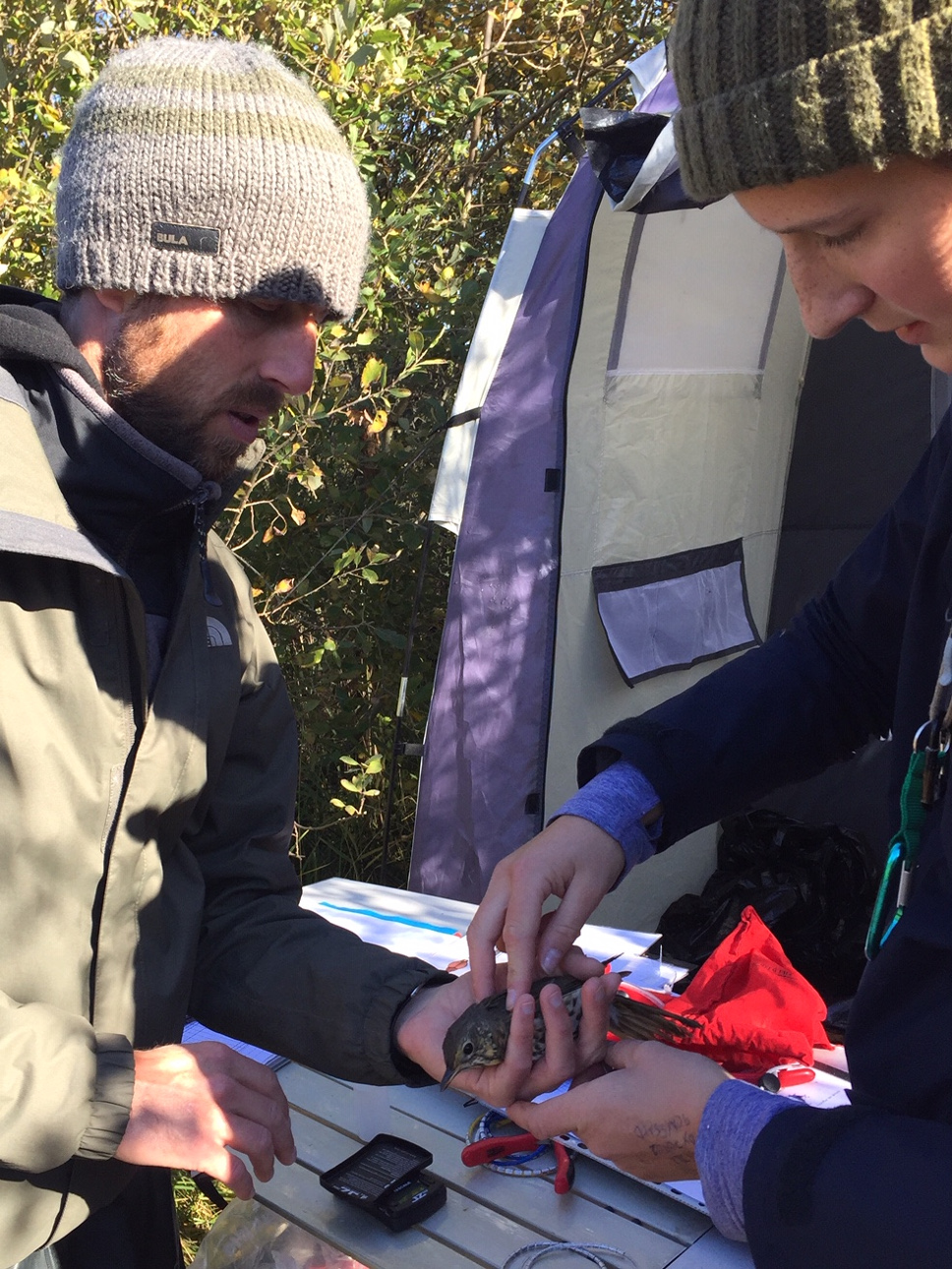
Molly showing James how to hold a Song thrush (Sangdrossel)
As is often the case, while we were away Rolf found probably the rarest bird of the day - a ringed Little Bunting (Dværgværling), which seems highly likely to be the bird ringed by Molly last week. In the afternoon, we went with Simon to several birding spots around Skagen in search of the elusive one or more Nutcrackers (Nucifraga) which have been reported flying over various local birders’ gardens. Needless to say, we didn’t have any luck, but now at least we know where to look!
Birds caught at Grenen: 8 Blue tits (Blåmejse), 2 Song thrushes (Sangdrossel), 1 Great tit (Musvit), 5 Robins (Rødhals), 5 Wrens (Gærdesmutte), 3 Bullfinches (Dompap), 2 Goldcrests (Fuglekonge), 1 Treecreeper (Træløber) and 3 Chiffchaffs (Gransanger).
People: James Butcher, Sarah Bedford, Molly Brown, Simon S. Christiansen and Rolf Christensen.
